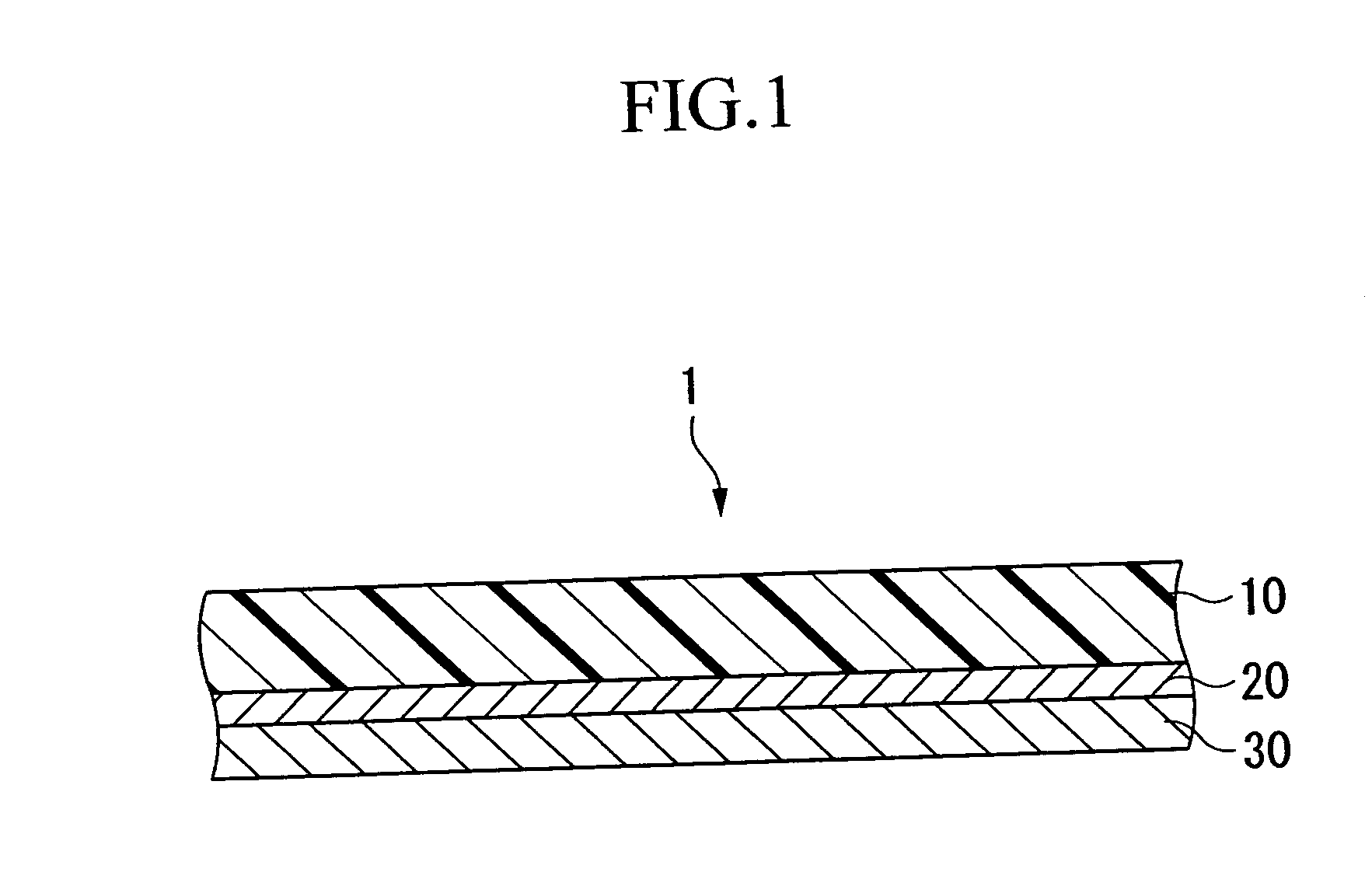Conductive polymer solution, antistatic coating material, antistatic hard coat layer, optical filter, conductive coating film, antistatic tacky adhesive, antistatic tacky adhesive layer, protective material, and method for producing the same
- Summary
- Abstract
- Description
- Claims
- Application Information
AI Technical Summary
Benefits of technology
Problems solved by technology
Method used
Image
Examples
example 1
Conductive Polymer Solution Containing Toluene
[0300] To a solution mixture prepared by adding 200 ml of acetone and 200 ml of toluene to 200 ml of the aqueous PSS-PEDOT solution of Preparation Example 2, 3.2 g of 1-dodecyl-2-methyl-3-benzylimidazolium chloride (phase transfer catalyst) synthesized in our company was added, followed by vigorous shaking. After standing, the organic solvent layer as an upper layer and the aqueous layer as a lower layer were separated and the aqueous layer was removed by isolation, followed by a nanomizer treatment to obtain a toluene solution of PSS-PEDOT as a conductive polymer solution.
example 2
Conductive Polymer Solution Containing Chloroform
[0301] To a solution mixture prepared by adding 10 ml of chloroform to 10 ml of the aqueous PSS-PEDOT solution of Preparation Example 2, 200 mg of cetylpyridinium chloride as a phase transfer catalyst was added, followed by vigorous shaking. After standing, the aqueous layer as an upper layer and the organic solvent layer as a lower layer were separated and the aqueous layer was removed by isolation, followed by a nanomizer treatment to obtain a toluene solution of PSS-PEDOT as a conductive polymer solution.
example 3
Conductive Polymer Solution Containing Dimethylacetamide
[0302] To the aqueous PSS-PEDOT solution of Preparation Example 2, 160 mg of Curesol SFZ was added and, after vigorously shaking, a solid component was recovered by filtration. The solid component was added in 20 ml of dimethylacetamide, and dispersed and dissolved in an ultrasonic washer, followed by a nanomizer treatment to obtain a dimethylacetamide solution of PSS-PEDOT as a conductive polymer solution.
[0303] Each of the conductive polymer solutions of Examples 1 to 3 was dip-coated onto a glass substrate to obtain a coating film of the conductive polymer solution. A surface resistance value of the resulting coating film was measured by HIRESTA manufactured by Dia instrument Co., Ltd. The results are shown in Table 1.
TABLE 1Example 1Example 2Example 3OrganicTolueneChloroformDimethylacetamidesolventSurface2 × 1045 × 1048 × 105resistancevalue (Ω)
[0304] As described above, the organic solvent solution of PSS-PEDOT was prep...
PUM
| Property | Measurement | Unit |
|---|---|---|
| Electrical conductor | aaaaa | aaaaa |
| Antistatic | aaaaa | aaaaa |
Abstract
Description
Claims
Application Information
 Login to View More
Login to View More - R&D
- Intellectual Property
- Life Sciences
- Materials
- Tech Scout
- Unparalleled Data Quality
- Higher Quality Content
- 60% Fewer Hallucinations
Browse by: Latest US Patents, China's latest patents, Technical Efficacy Thesaurus, Application Domain, Technology Topic, Popular Technical Reports.
© 2025 PatSnap. All rights reserved.Legal|Privacy policy|Modern Slavery Act Transparency Statement|Sitemap|About US| Contact US: help@patsnap.com

